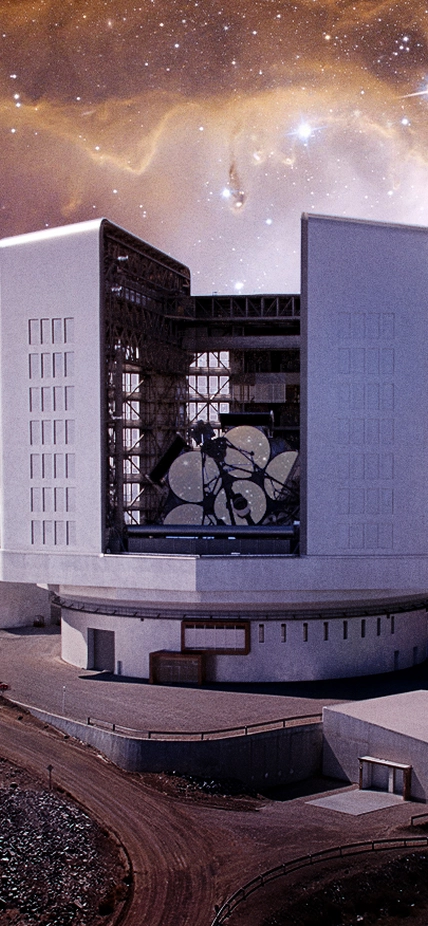Washington, DC— The U.S. National Science Foundation is advancing the Giant Magellan Telescope (GMT), under construction at Carnegie Science’s Las Campanas Observatory, into a critical new stage of review. The Major Facilities Final Design Phase represents one of the final steps in demonstrating the project’s eligibility for federal funding to complete the facility. The agency’s decision reflects the next-generation telescope’s scientific merit, construction progress, and alignment with national priorities in science and technology.
“This milestone affirms the Giant Magellan’s technical readiness and reflects growing momentum behind this once-in-a-generation project,” said Carnegie Science President John Mulchaey. “Finalizing construction at our Las Campanas site will secure a vital tool for the global scientific community–and ensure that the United States remains a world leader in astronomy and astrophysics for decades to come.”
Once operational, the Giant Magellan will usher in a new era of astronomical discovery, revealing the fundamental physics underpinning the cosmos and advancing the search for life beyond Earth. Its configuration of seven 8.4-meter primary mirrors will give the Giant Magellan unprecedented spatial resolution—four times that of JWST and 10 times sharper than the Hubble Space Telescope. Outfitted with special instruments and cameras, it will also give astrophysicists the tools to unravel the mysteries of dark matter, dark energy, black holes, and the origin of our universe.
“What a great moment for the future of American astronomy,” said Giant Magellan Telescope President Robert Shelton. “With significant construction already underway across the United States and at our site in Chile, this milestone positions our nation to lead the next era of discovery.”
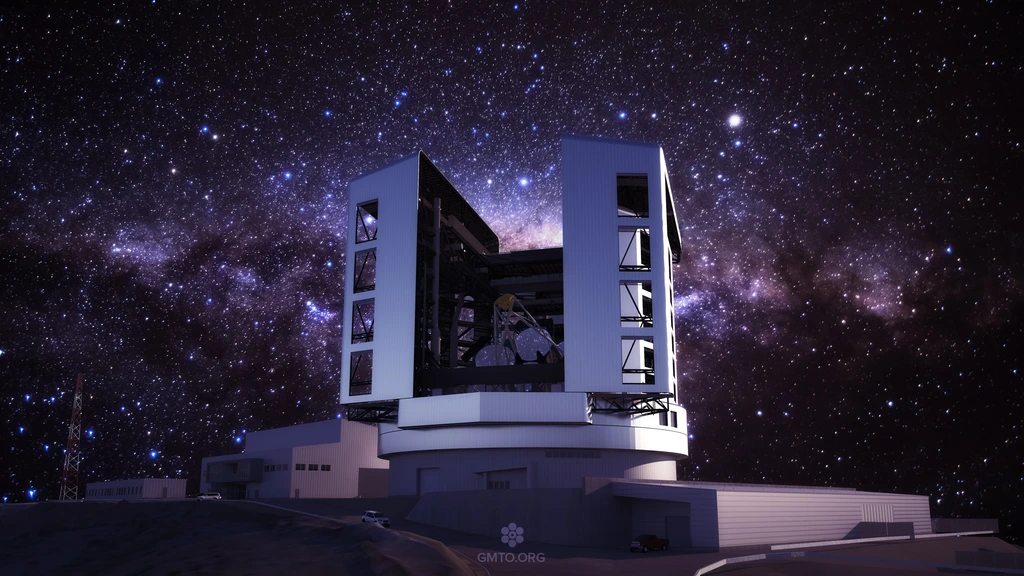
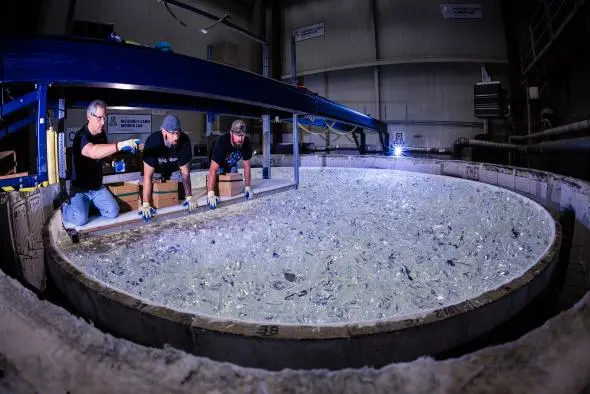

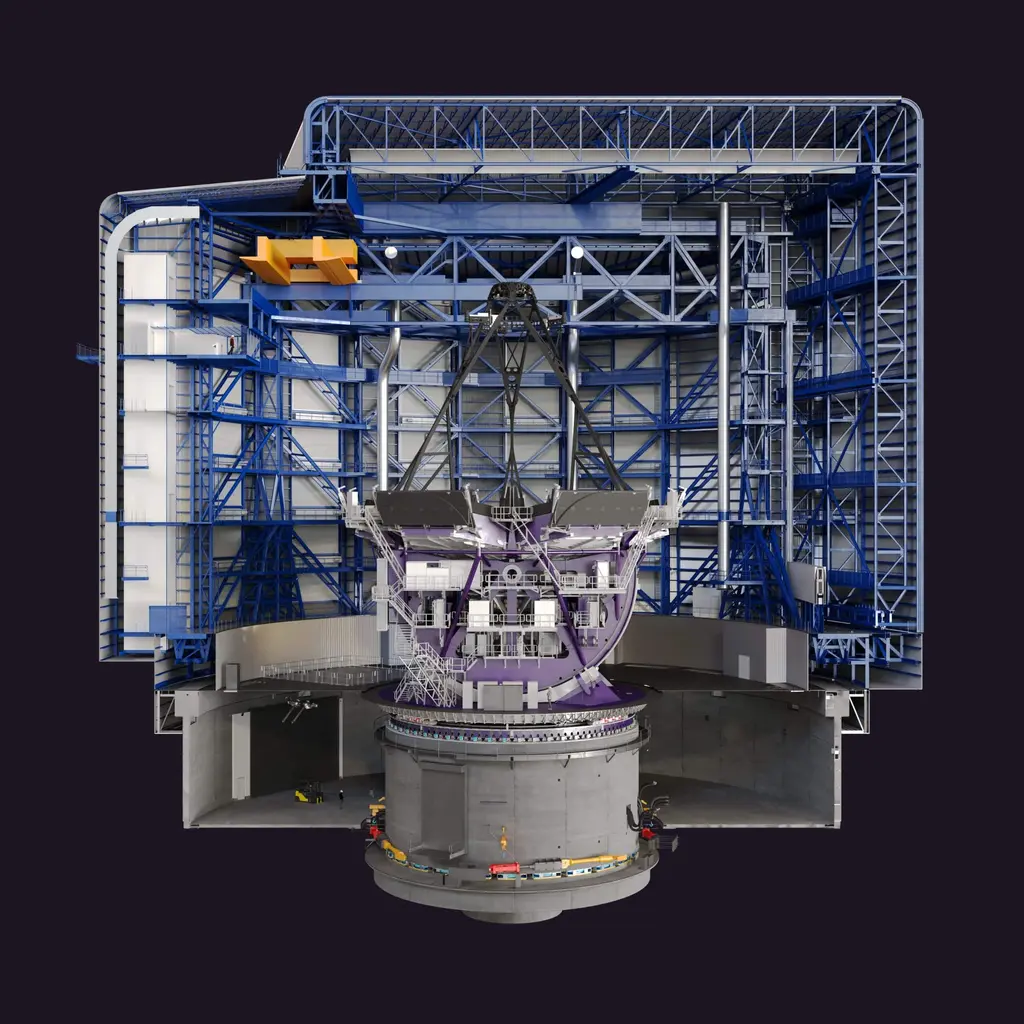

Illustration of GMT telescope with the milkyway in the background
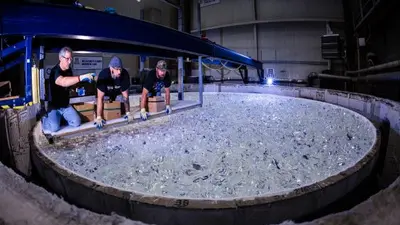
Mirror lab staff review the glass placed in the Giant Magellan Telescope mirror mold, checking for space

Mirror lab staff set pieces of glass onto the mold for the fifth mirror for the Giant Magellan Telescope
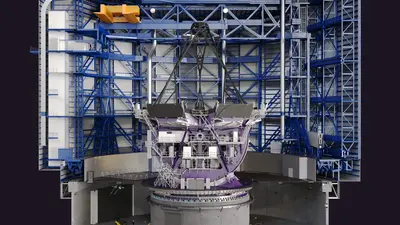
Cross section rendering of the telescope enclosure, pier, and mount. Image credit: Giant Magellan Telescope – GMTO Corporation.
The Giant Magellan is already 40 percent under construction, with major components being manufactured and tested in facilities across 36 states. Advanced optics and primary mirrors were synthesized and are now being tested in Arizona, science instruments are in development in multiple states including Texas and California—including at Carnegie Science’s Pasadena facility—and the telescope mount structure is being built in Illinois. Additionally, major infrastructure progress has been completed at Las Campanas, including utilities, roads, support structures, and a fully excavated foundation for the telescope enclosure.
Strategically located in Chile’s Atacama Desert, at one of the most scientifically valuable observing sites on Earth, Las Campanas Observatory offers more than 300 clear nights each year, exceptional atmospheric stability, and direct access to the southern sky and the galactic center of the Milky Way.
Carnegie Science has been fundamentally intertwined with the Giant Magellan project since its inception. The idea for the telescope was born at Carnegie Science Observatories in Pasadena and Carnegie researchers have made major contributions to the Giant Magellan’s technical and scientific capabilities. The project’s Chief Scientist, Carnegie astronomer Rebecca Bernstein, is tasked with ensuring that the telescope and its instruments will meet the partner institutions’ scientific goals.
Backed by nearly $1 billion in private funding—the largest private investment ever made in ground-based astronomy—the Giant Magellan is built by an international consortium of 15 universities and research institutions, including founding partner Carnegie Science.
“The Giant Magellan Telescope will work in synergy with billions of dollars already invested in U.S. research facilities around the world, creating a powerful ecosystem of tools that ensure American scientists have the best resources to lead discovery,” said former NSF director Walter Massey, Board Chair of the Giant Magellan Telescope.
Public Programs about GMT
Watch Carnegie astronomer Rebecca Bernstein, who servese as the Giant Magellan Telescope's Chief Scientist discuss the project's goals and the breakthrough engineering her team is undertaking to bring the project to fruition.

In the Pursuit of Light: Creating One of the World's Largest Telescopes - Dr. Rebecca Bernstein

Talks and Telescopes: Rebecca Bernstein, "The Giant Magellan Telescope: The Next Leap in Discovery"
